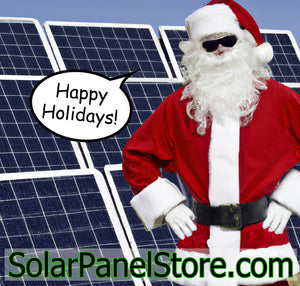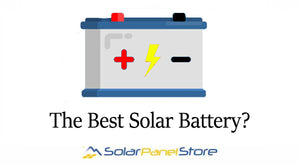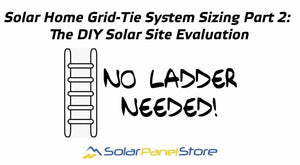Solar Panel Store Blog — Solar Info

Happy Holidays! 2022 is almost wrapped up!
Dear valued customers and partners,
As the holiday season approaches, we at SolarPanelStore.com would like to take a moment to thank you for your support throughout the year. It has been a challenging year for everyone, but we are grateful to have had the opportunity to continue serving you and helping you make the switch to renewable energy.
Renewable energy is more important now than ever before. As we work to combat climate change and protect our planet for future generations, the shift to clean, sustainable sources of energy is crucial. Solar panels are a key part of this transition, providing a reliable and renewable source of power that can help reduce our reliance on fossil fuels.
We are truly grateful to have such wonderful customers and partners who share our commitment to a better, more sustainable future. Your support and partnership have been invaluable, and we look forward to continuing to work together in the coming year.
From all of us at SolarPanelStore.com, we wish you a happy holiday season and a prosperous new year. Thank you for choosing us as your partner in the transition to renewable energy.
Sincerely, Loren and Dan (Team SolarPanelStore.com)
- Loren Geist
- Tags: solar blog Solar Info

Which type of battery is best for solar applications?
There are several types of batteries that can be used for solar power systems, but the best type of battery will depend on your specific needs and circumstances. Some common options include lead-acid batteries, lithium-ion batteries, and nickel-metal hydride batteries. Each of these types of batteries has its own advantages and disadvantages, so it's important to consider factors such as cost, performance, and maintenance requirements when choosing the right battery for your solar power system.Lead-acid batteries are the most common type of battery used in solar power systems. They are relatively inexpensive and have a long life span, but they can be heavy and can lose their charge quickly if not used regularly. It's common to use sealed or wet style batteries for renewable energy applications.
The main difference between sealed lead-acid batteries and wet lead-acid batteries is the way in which the electrolyte solution is contained. In sealed lead-acid batteries, the electrolyte solution is absorbed into a sponge-like material, whereas in wet lead-acid batteries, the electrolyte solution is held in a separate compartment within the battery.
Sealed lead-acid batteries are also known as "maintenance-free" or "valve-regulated" batteries because they do not require regular maintenance or the addition of electrolyte solution. Wet lead-acid batteries, on the other hand, require regular checking and topping up of the electrolyte solution to ensure that the battery remains in good working order.
Sealed lead-acid batteries are generally more expensive than wet lead-acid batteries, but they are more convenient to use and require less maintenance.
Lithium-ion batteries are becoming increasingly popular for use in solar power systems because they are lightweight, have a high energy density, and can hold their charge for a long time. However, they are also more expensive than lead-acid batteries.
Nickel-metal hydride batteries are similar to lithium-ion batteries in that they are lightweight and have a high energy density. They are also relatively inexpensive, but they may not last as long as lithium-ion batteries.
The team here at SolarPanelStore.com has been working with batteries for off-grid and grid-hybrid systems for many years, and we have a lot of experience that we are happy to share with our customers. Please feel free to contact us for questions about batteries or to help with any kind of solar application!
Solar Home Grid-Tie System Sizing Part 2: The DIY Solar Site Evaluation
In part two of Solar Home Grid-Tie System Sizing we will take a look at a quick and easy method of doing your own site evaluation and estimating available roof space, without the need to break out the ladder! Using google maps, it's fairly simple to look into potential shading problems, roof orientation, and roof size.Using https://www.google.com/
Here is an example of an ideal roof layout, southern facing, with no vents or other obstructions.
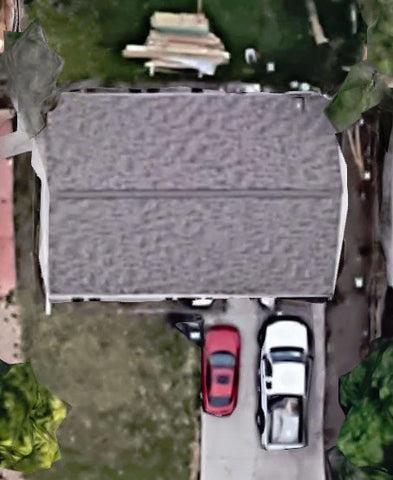
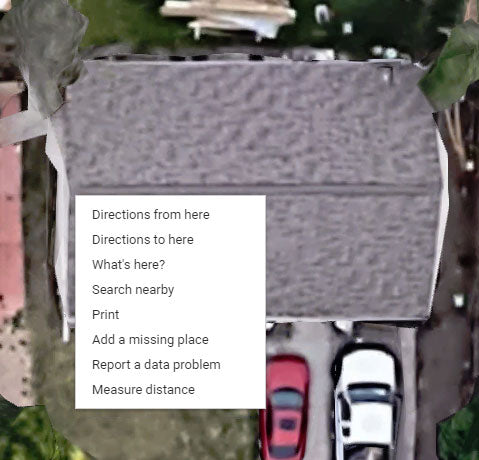
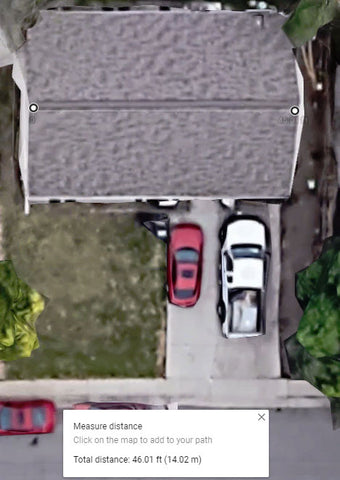
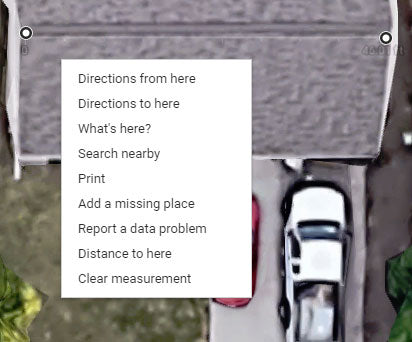
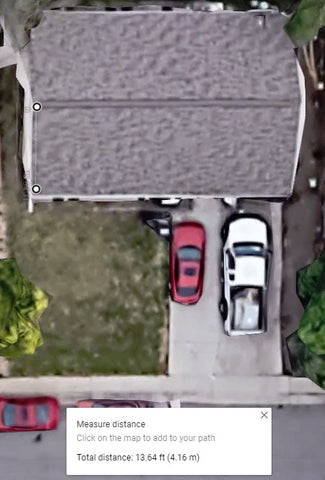
Now we have our width and height measurement to work off of, approximately 46 x 13.50 ft. and we can look at array sizing.
Dividing the roof width by the solar panel width shows 14.06, so I would say that it would be comfortable to estimate that we can have columns consisting of thirteen solar panels. Dividing the roof height by the solar panel height shows 4.12, so again I would be conservative and stick with three rows of solar panels. The entire array would consist of 39 solar panels. We are using a 305W solar panel in this example, so the array power comes to 11,895 W (11.895 kW).
If you read part one of system sizing, you may have an idea of the size of array you are looking for based on your current electrical usage. So how much power per month or year could this system generate? NREL provides an excellent tool called PV Watts to calculate this which can be found here: https://pvwatts.nrel.
Note that DC System Size is in kilowatts (kW), not Watts (W), a kilowatt is a measurement of 1000 W of electrical power. If the solar panels you're looking into have an efficiency rating over 18%, I'd consider them in the "Premium" category. The Array Type will most likely be either Fixed Open Rack(Such as a ground mount or pole mounted system) or Fixed Roof Mount. The default tilt setting of 20 Degrees is probably a good choice unless you happen to know this detail, which is easy if you know the pitch of your roof (See our chart below). Azimuth is the direction of the solar array from the observer, expressed as the angular distance from the north or south. North as 0°, east 90°, south 180°, and west 270°. The electricity rate should be pretty close, as these are adjusted based on your address, but if you know your current utility cost and it's different, go ahead and make the appropriate adjustment.
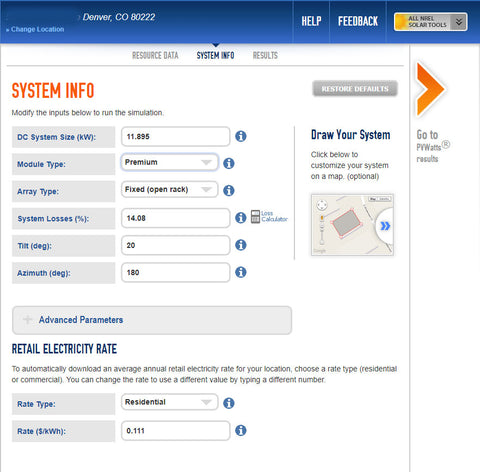
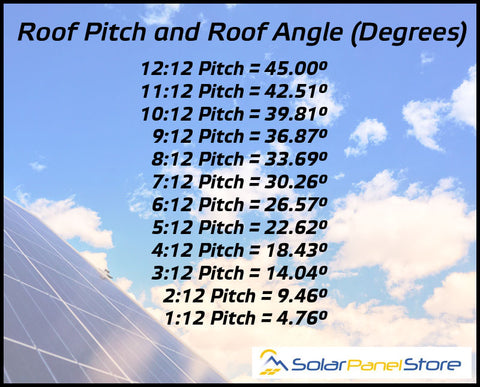
Now just click the orange arrow to go to the results page for an estimate of production:
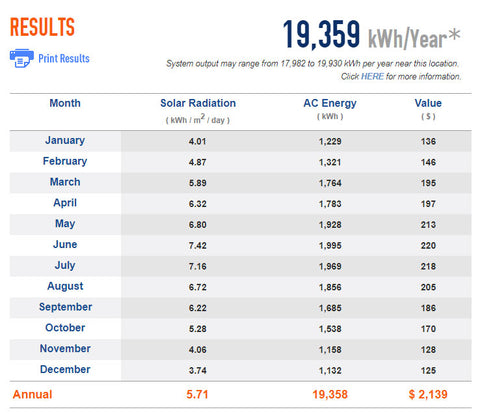
- Loren Geist
- Tags: Grid-Tie Solar Solar Estimate Solar Home Solar Info Solar Panel Design Solar Panels for Home

